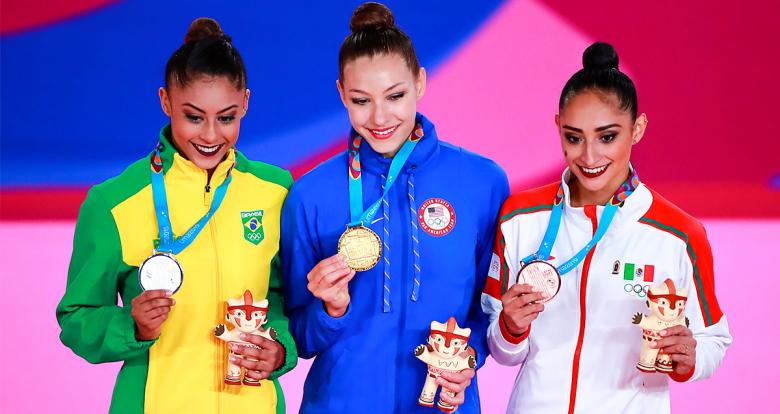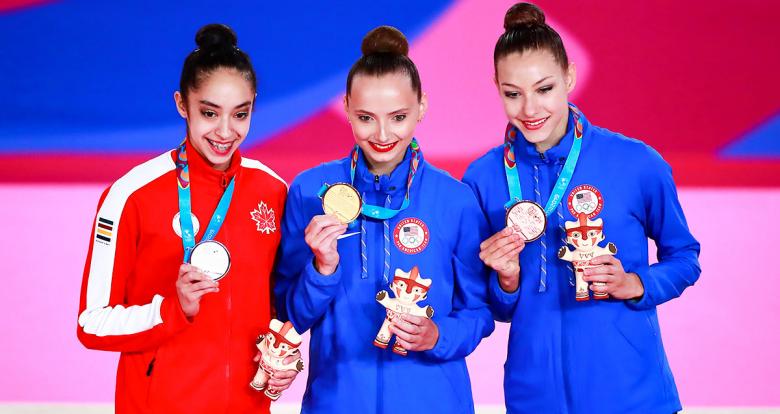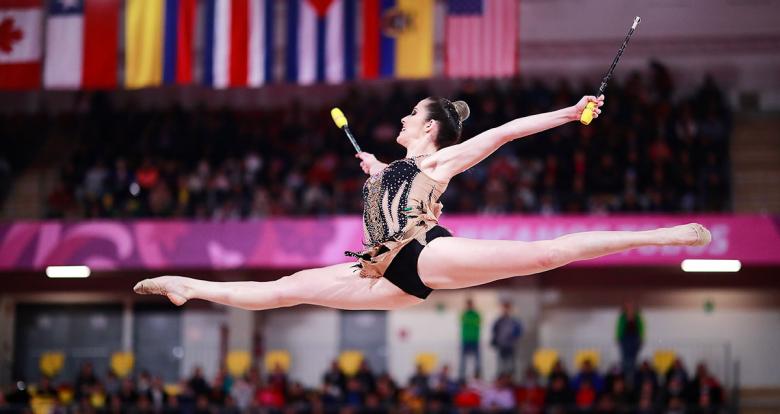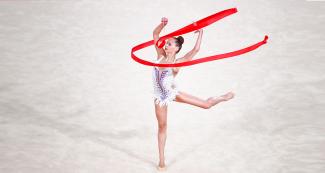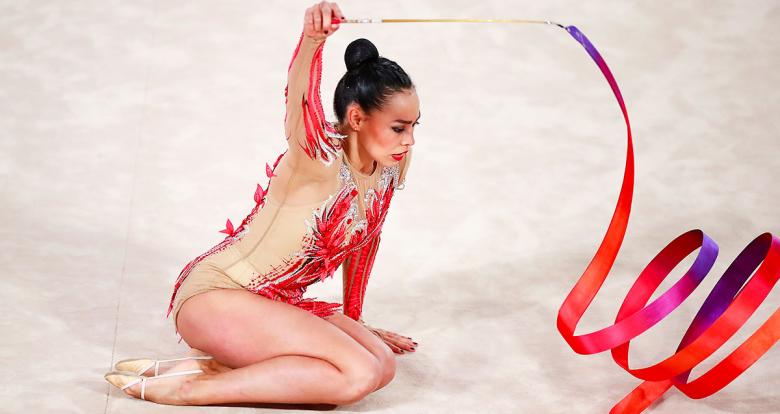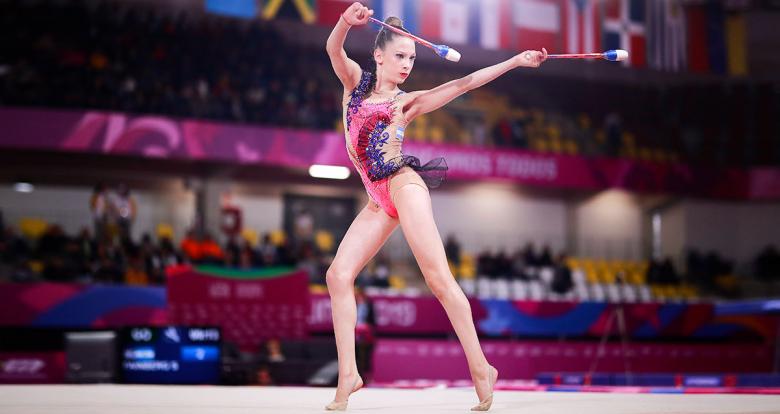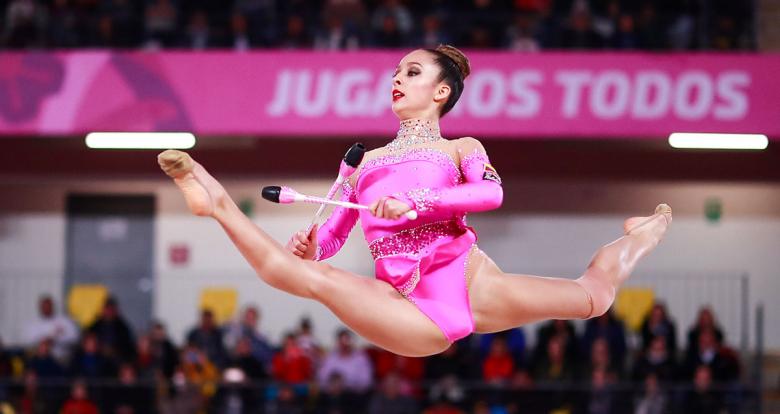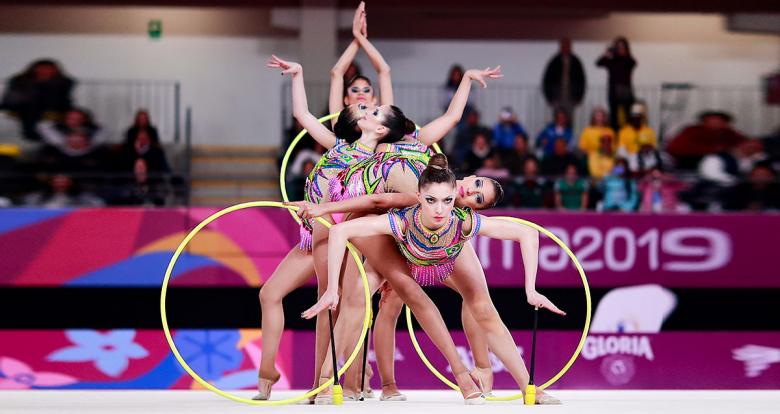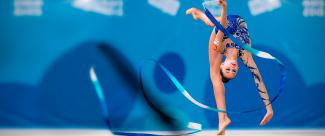
Rhythmic Gymnastics
|
WOMEN'S INDIVIDUAL
|
WOMEN'S GROUP
|
|---|---|
| Individual all-around | All-around |
| Hoop | 5 balls |
| Ball | 3 hoops, 2 pairs of clubs |
| Clubs | |
| Ribbon |
|
WOMEN'S INDIVIDUAL
|
|---|
| Individual all-around |
| Hoop |
| Ball |
| Clubs |
| Ribbon |
|
WOMEN'S GROUP
|
| All-around |
| 5 balls |
| 3 hoops, 2 pairs of clubs |
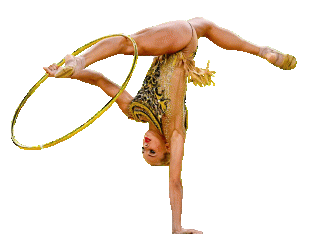
Rhythmic gymnastics and artistic swimming are the only two Pan American sports in which only women participate. It is a discipline based on motion that combines dance, artistic gymnastics and acrobatics. Athletes perform in short routines in a 13 x 13 m mat. Four routines with different apparatus (hoop, ball, clubs and ribbon) are held in individual events. In team events, groups of five athletes compete in two routines — one routine with five athletes with the same apparatus and another routine with a combination of two and the same apparatus and three with another. Both individual and group events compete for a medal in each apparatus and in the all-around competition. A total of 46 athletes took the stage at Lima 2019. Before these Games, the US was in the lead with 20 gold medals. This sport was held at the Villa El Salvador Sports Center during Lima 2019.
Keywords
Boomerang roll/throw: A rolling or throwing maneuver performed such that the apparatus returns to the gymnast after rolling or throwing.
Retro roll: A roll of the hoop in any direction which returns to the gymnast.
Snake: A rippling movement of the ribbon.
Rhythmic gymnastics first appeared in the 19th century. However, the first experimental competitions occurred in Europe in the 1930s. In 1964 the first world championships took place in Budapest, Hungary.

Images



